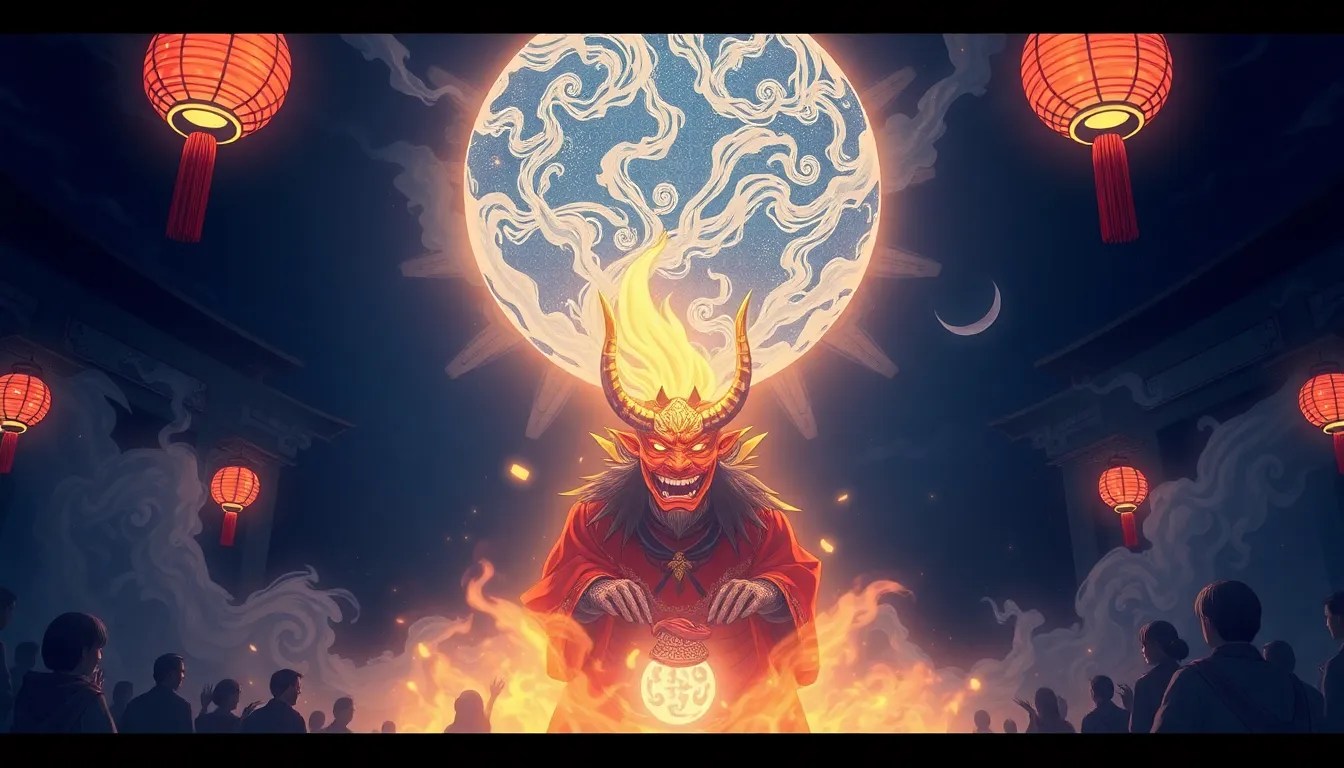The Role of Yōkai in Japanese Festivals
I. Introduction to Yōkai and Japanese Festivals
Yōkai, often translated as “monsters” or “spirits,” are a fascinating and diverse category of supernatural beings in Japanese folklore. These entities range from malevolent creatures to benign spirits, each possessing unique characteristics and stories that enrich Japan’s cultural landscape.
Traditional Japanese festivals, known as matsuri, are vibrant celebrations that often honor deities, seasonal changes, and local traditions. During these events, the presence of yōkai is particularly significant, as they embody the connection between the spiritual world and human society.
The importance of yōkai in Japanese culture cannot be overstated. They serve as symbols of nature, cautionary tales, and reflections of societal values, making them integral to the identity of Japanese festivals.
II. Historical Context of Yōkai in Japanese Folklore
The origins of yōkai can be traced back to ancient Japan, where they emerged from animistic beliefs and the reverence for nature. Over time, yōkai evolved, influenced by various cultural and religious practices, including Shinto and Buddhism.
Shinto beliefs, which emphasize the presence of kami (deities or spirits) in nature, contributed to the development of yōkai as embodiments of natural phenomena. Similarly, Buddhist concepts of karma and the afterlife shaped the narratives surrounding these creatures.
Yōkai appear prominently in classical literature and art, such as in the famous Konjaku Monogatari and the works of artists like Utagawa Kuniyoshi. These depictions helped to solidify the place of yōkai in Japanese cultural consciousness.
III. Yōkai as Symbols of Seasonal Change
Yōkai are deeply connected to the rhythms of nature and the changing seasons. Many yōkai legends are linked to specific natural events, illustrating the belief that these beings influence or reflect the world around us.
Seasonal festivals often feature yōkai in various forms, celebrating their connection to agricultural practices and the changing environment. For instance, certain yōkai are believed to bless harvests or protect crops from misfortune.
- Spring festivals may include yōkai that represent new beginnings and growth.
- Summer matsuri often feature yōkai associated with water and the heat of the season.
- Autumn celebrations might honor yōkai linked to harvest and gratitude.
- Winter festivals can include yōkai that embody the cold and darkness, often invoking themes of protection and warmth.
IV. Notable Festivals Featuring Yōkai
Several festivals across Japan prominently feature yōkai, showcasing their significance in local culture. Some notable examples include:
A. The Aomori Nebuta Matsuri
This vibrant summer festival in Aomori features large, illuminated floats depicting yōkai and historical figures. Participants don traditional clothing and engage in lively dances, creating a festive atmosphere that honors these supernatural beings.
B. The Gion Matsuri in Kyoto
One of Japan’s most famous festivals, the Gion Matsuri, showcases elaborate floats and parades. The event has historical ties to yōkai, as it was initially held to appease spirits believed to cause disease and misfortune.
C. The Shingen-ko Matsuri in Yamanashi
Celebrating the legacy of the famous warlord Takeda Shingen, this festival includes yōkai-themed events, such as parades and performances that highlight local folklore and the region’s connection to these mystical beings.
V. Yōkai and Community Identity
Yōkai play a crucial role in shaping community identity and local culture. Many yōkai are viewed as guardians or protectors of specific areas, fostering a sense of belonging among residents.
Community involvement in yōkai-themed festivals helps strengthen these ties, as locals actively participate in planning and executing events that celebrate their unique folklore. This participation not only fosters community spirit but also preserves traditions for future generations.
Additionally, the stories surrounding yōkai often reflect local history and customs, preserving cultural heritage in an engaging manner.
VI. Theatrical Representations of Yōkai
The representation of yōkai extends beyond festivals into the realm of traditional theater. Performing arts such as Noh and Kabuki have long included yōkai characters, bringing their stories to life on stage.
Modern adaptations of yōkai tales have also emerged, influencing various forms of entertainment, including anime, manga, and video games. These contemporary interpretations often reinterpret yōkai in innovative ways, ensuring their relevance in popular culture.
The influence of yōkai can also be seen in art, fashion, and design, showcasing their enduring appeal in Japanese society.
VII. Yōkai in Modern Festivals and Celebrations
In recent years, the incorporation of yōkai into modern matsuri has become increasingly popular. Festivals now feature yōkai-themed events, merchandise, and art, attracting both locals and tourists alike.
- Yōkai-themed floats and decorations are common sights during festivals.
- Merchandise such as plush toys, keychains, and artwork featuring popular yōkai can be found at these events.
- Social media has played a significant role in promoting yōkai festivals, allowing for broader participation and engagement.
VIII. Conclusion: The Enduring Legacy of Yōkai in Japanese Festivals
Yōkai hold a significant place in Japanese festivals, symbolizing the connection between the spiritual and natural worlds. They enrich the cultural fabric of Japan, providing a sense of history and identity to communities.
The continuing relevance of yōkai in contemporary Japanese society highlights their importance as cultural icons. As festivals evolve, so too do the ways in which yōkai are celebrated, ensuring that these mystical beings remain a vital part of Japan’s cultural heritage.
Looking to the future, yōkai-inspired celebrations and cultural appreciation are likely to thrive, as new generations rediscover and reinterpret these fascinating figures in the context of modern life.



